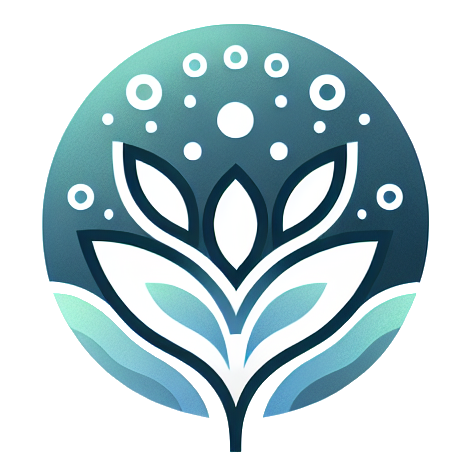In our fast-paced world, the pursuit of wellness can often feel overwhelming. With an abundance of information and countless options available, it can be challenging to know where to begin. Creating a personal wellness toolkit is a highly effective way to cultivate a balanced and healthy lifestyle. This toolkit is not just a collection of items; it’s a personalized approach to well-being that addresses your unique needs and goals. In this article, we will explore the essential components of a wellness toolkit, guiding you to create a resource that fosters health, balance, and positivity.
Understanding Wellness
Before diving into the specifics of building your toolkit, it’s vital to understand what wellness truly entails. Wellness is more than just the absence of illness; it encompasses a holistic approach to physical, mental, and emotional health. According to the World Health Organization (WHO), wellness is a state of complete physical, mental, and social well-being. This means that a well-rounded wellness toolkit should address multiple dimensions of health, including:
- Physical Health: Exercise, nutrition, and sleep.
- Emotional Health: Self-awareness, stress management, and emotional resilience.
- Social Health: Relationships, community engagement, and social support.
- Spiritual Health: Purpose, values, and connection to something larger than oneself.
By understanding these dimensions, you can begin to tailor your wellness toolkit to suit your individual needs.
Assessing Your Needs
The first step in building your personal wellness toolkit is to assess your current health and wellness needs. Take some time to reflect on your lifestyle and identify areas where you may want to improve. Consider the following questions:
- What physical activities do I enjoy?
- How do I feel emotionally on a day-to-day basis?
- Do I have a solid support system of friends and family?
- What practices bring me joy and fulfillment?
This self-assessment will help you pinpoint the specific tools and strategies you need to include in your wellness toolkit.
Essential Components of a Wellness Toolkit
Now that you have a clearer understanding of your needs, let’s delve into the essential components of a wellness toolkit. Here are some must-have items to consider:
1. Physical Wellness Tools
To support your physical health, consider incorporating the following into your toolkit:
- Exercise Equipment: Resistance bands, dumbbells, yoga mats, or even just a good pair of walking shoes can help you stay physically active without requiring a gym membership.
- Healthy Recipes: Create a collection of nutritious recipes that you enjoy. This could include quick breakfast ideas, satisfying lunches, and wholesome dinners. Cooking can be therapeutic, and having a go-to recipe book makes it easier to maintain a balanced diet.
- Sleep Aids: Good sleep is crucial for overall wellness. Consider tools that promote better sleep, such as sleep masks, lavender essential oil, or white noise machines.
2. Emotional Wellness Tools
Emotional health is just as important as physical health. Here are some tools to enhance your emotional well-being:
- Journals: Keeping a journal can be a powerful way to process emotions and track personal growth. Reflect on your feelings, set goals, and celebrate your achievements.
- Mindfulness Apps: Consider downloading mindfulness or meditation apps that guide you through practices to reduce stress and enhance self-awareness.
- Stress-Relief Techniques: Explore various stress-relief techniques such as deep breathing exercises, progressive muscle relaxation, or guided imagery.
3. Social Wellness Tools
Building and maintaining healthy relationships is a key aspect of wellness. Here are some tools to foster social connections:
- Connection Calendar: Create a calendar that reminds you to reach out to friends and family regularly. Socializing can boost your mood and improve overall well-being.
- Community Resources: Research local clubs, classes, or volunteer opportunities that align with your interests. Engaging with your community can enhance your sense of belonging.
- Support Groups: If you’re facing specific challenges, consider joining a support group. Sharing experiences with others can provide comfort and encouragement.
Personalizing Your Toolkit
Your wellness toolkit is unique to you, and personalization is key. As you gather your tools, think about what resonates with you the most. You might choose to focus on specific areas of wellness based on your assessment or incorporate a variety of tools for a more balanced approach.
Another great way to personalize your toolkit is by incorporating your passions and interests. For example, if you love gardening, consider adding gardening tools and resources to your toolkit. If you find joy in art, include art supplies and classes. The more your toolkit reflects who you are, the more effective it will be in supporting your wellness journey.
Maintaining Your Toolkit
Building a wellness toolkit is just the beginning; maintaining it is equally important. Regularly revisit your toolkit to assess its effectiveness and make adjustments as needed. Here are a few tips for keeping your toolkit fresh and functional:
- Set Goals: Create short-term and long-term wellness goals that align with your personal aspirations. This will help keep you motivated and focused on your wellness journey.
- Stay Informed: Wellness trends and research are always evolving. Stay informed by reading articles, following health blogs, and attending workshops.
- Celebrate Progress: Acknowledge and celebrate your achievements, no matter how small. This reinforces positive behavior and keeps you motivated to continue your wellness journey.
"Wellness is not a destination; it's a lifelong journey of self-discovery and growth."
Building your personal wellness toolkit is a powerful step toward achieving a balanced and fulfilling life. By incorporating a variety of tools that address your physical, emotional, social, and spiritual health, you create a resource that supports your unique journey to well-being. Remember, wellness is not a one-size-fits-all approach; it’s about discovering what works best for you. So, take the time to assess your needs, personalize your toolkit, and embrace the journey to a healthier, happier you. The path to wellness is filled with opportunities for growth and joy, and your toolkit is the compass that will guide you along the way.
